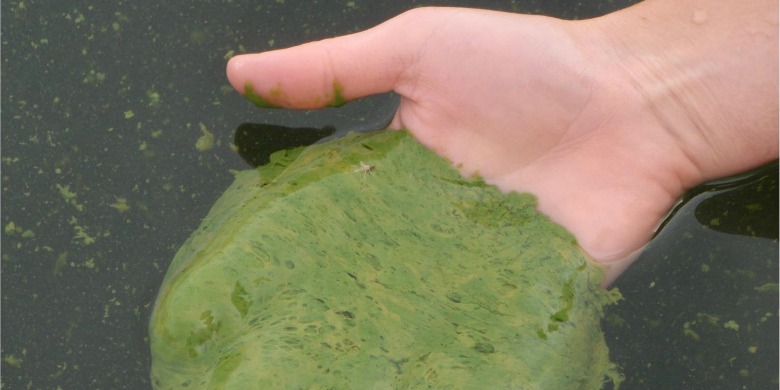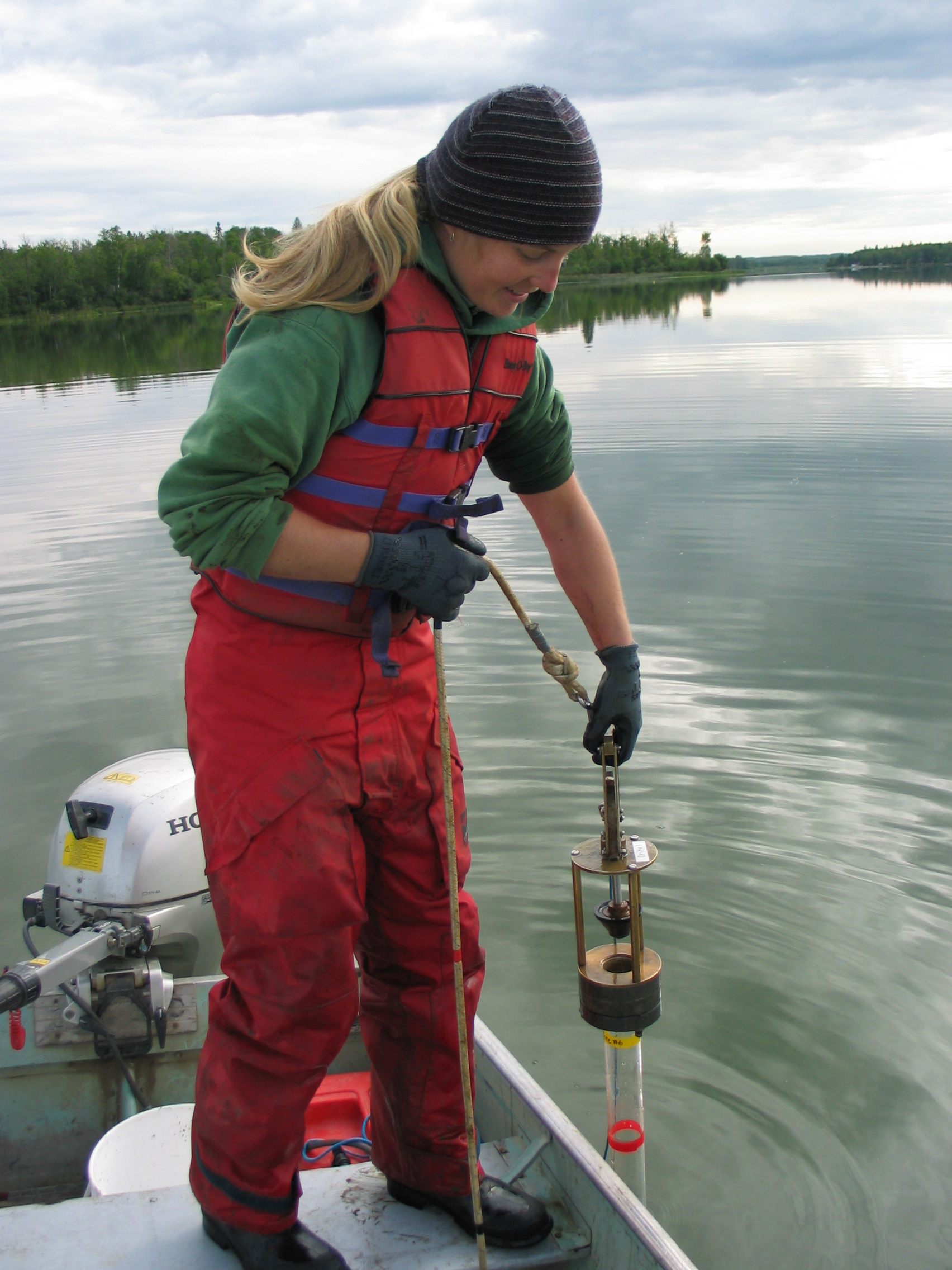
A bloom of blue-green algae on Nakamun Lake in central Alberta.
You may have seen it at your cottage lake or favourite beach-it can look like green grass clippings floating on the surface of the water, pea soup spilled in a lake, or a soapy green scum along the shoreline.
"This treatment is a way of remediating lakes with a compound that's naturally occurring in the system."
This cloudy green sludge is known as an algal bloom and occurs in lakes all around the world. More than just an eyesore, cyanobacteria, the predominant type of nuisance algae blooming in freshwaters, produces potent brain and liver toxins that can cause illness or death in humans, pets, and livestock. Algal blooms also pose significant cultural and economic risks to humans-for example, the increased cost of drinking water treatment, devaluation of shoreline properties, and losses to tourism and fishery industries.
Algal blooms often result from high concentrations of nutrients-namely phosphorus-being released from sediment at the bottom of lakes. While these blooms can be a natural occurrence, they are most often caused by pollution from phosphorus released from the accumulation of sewage, fertilizer runoff, and other sources.
 Treating anemic Alberta lakes
Treating anemic Alberta lakes
"There is a great need for strategies to deal with harmful algal blooms, so we conducted this experiment see if we could use iron to lock up the nutrients that algae need to grow," says Diane Orihel, freshwater ecologist and lead author on the study. The theory was that adding iron to lakes would keep a greater amount of phosphorus down in the sediment and thus not available in the water. Since phosphorus is an important nutrient for the problematic blue-green algae, the result would be an improvement in water quality.
To test this theory, Orihel installed 15 large mesocosms, adding a different amount of iron to each. "Mesocosms are like big test tubes in a lake, allowing us to isolate different parts of the same lake for an experiment," she explains. "We monitored nutrient concentrations and the algal community in the mesocosms in response to iron treatment." The experiment was conducted at Nakamun Lake, Alberta, about an hour west of Edmonton.
The results showed that the iron treatment significantly improved the lake water quality, reducing the phosphorus levels as well as the total amount of algae and potentially toxic cyanobacteria present.
Now a Postdoctoral Fellow at the University of Ottawa, Orihel conducted this study as part of her PhD research at the University of Alberta, where she was co-supervised by biology professors Rolf Vinebrooke and David Schindler.
While iron treatments have been conducted before in other countries, this is the first published study of iron treatment in a Canadian lake.
"Most of the lakes in Alberta are deficient in iron just based on the natural geology of the province, and iron is a very important binder of phosphorus in lake sediments," explains Vinebrook. "This treatment is a way of remediating lakes with a compound that's naturally occurring in the system. Whereas a lot of other places advocate adding an exotic kind of chemical to the lake, iron is more of a green solution."
A blue-green invasion
The findings suggest that iron treatment could be applied as a remediation strategy to control algal blooms in important nutrient-polluted ecosystems, such as cottage lakes or drinking water reservoirs.
Earlier studies have shown that that high levels of microcystin, a common human liver toxin produced by cyanobacteria, is occurring in Canadian lakes and reservoirs from coast to coast. Some algal blooms are large enough to be visible in satellite images, appearing as large green clouds.
"Shallow lakes tend to be more prone to algal blooms, but algal blooms occur in lakes of any size, even the world's great lakes," says Orihel, noting that the main factor making lakes more prone to algal blooms is human development of watersheds and shorelines, such as the conversion of natural forest and prairie to agricultural cropland or pastures for livestock.
Orihel cautions that this treatment, while successful, should be used in conjunction with efforts to reduce pollution and external nutrient loading by installing better sewage treatment, fixing leaking septic tanks, restoring wetlands and riparian areas, banning cosmetic fertilizer use, and minimizing essential fertilizer applications.
The study, "Experimental iron amendment suppresses toxic cyanobacteria in a hypereutrophic lake" has been published in Ecological Applications.